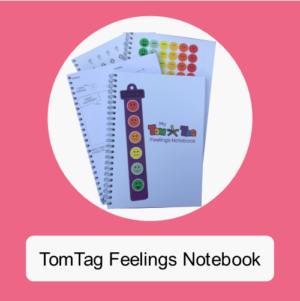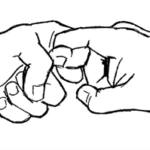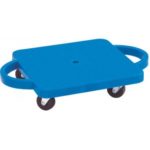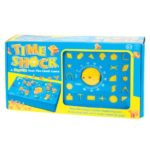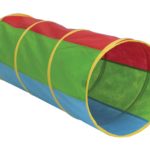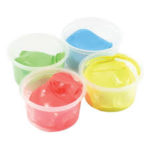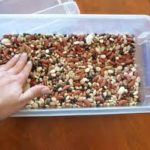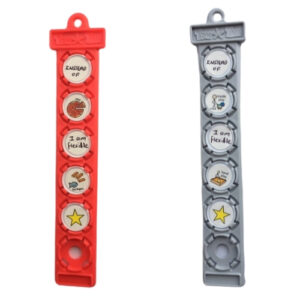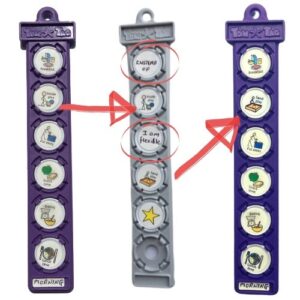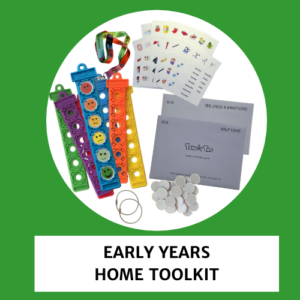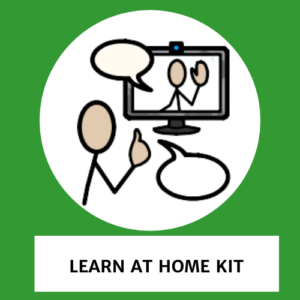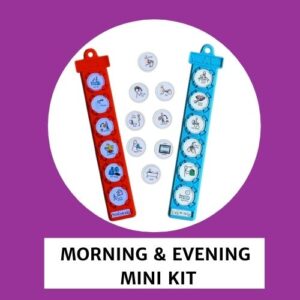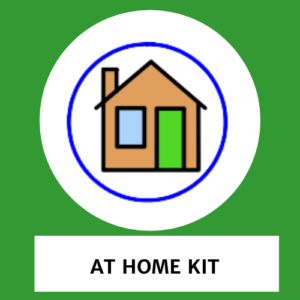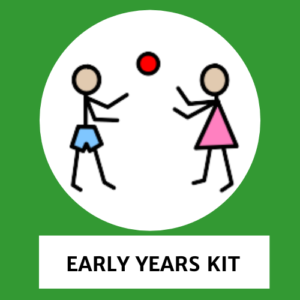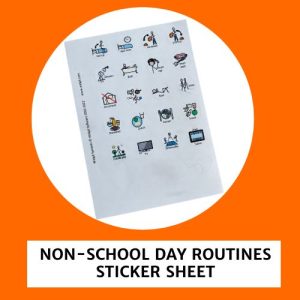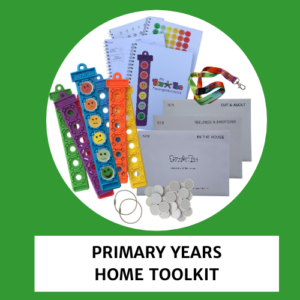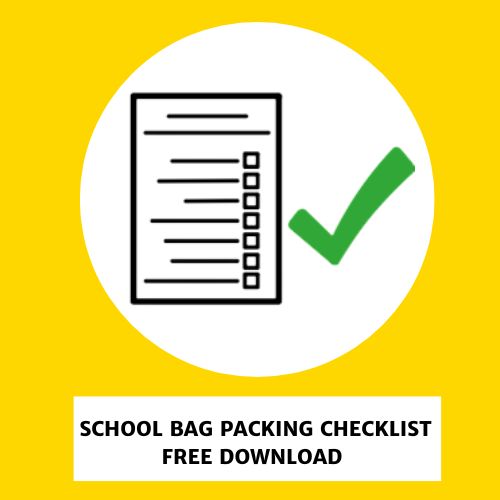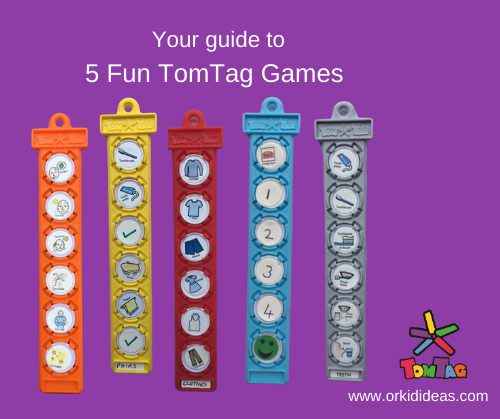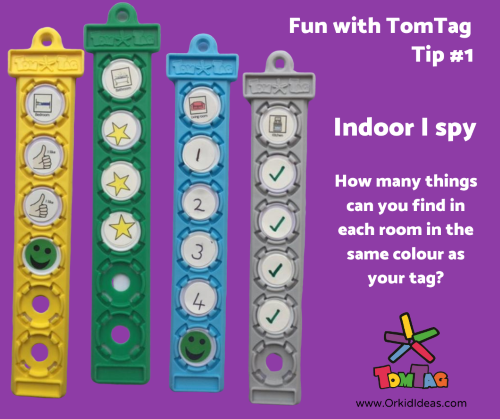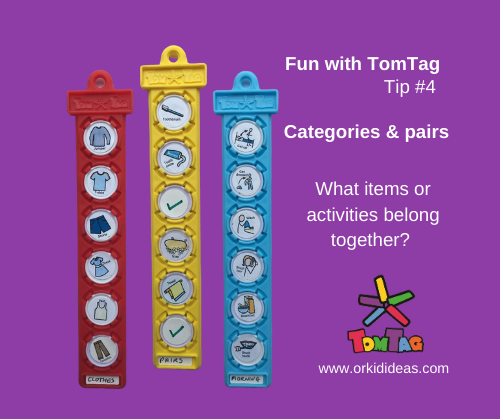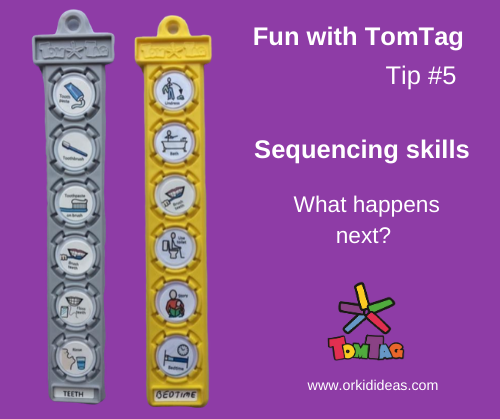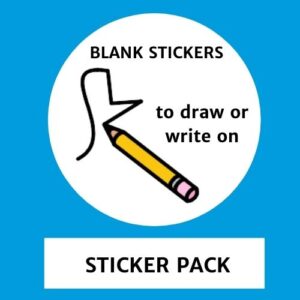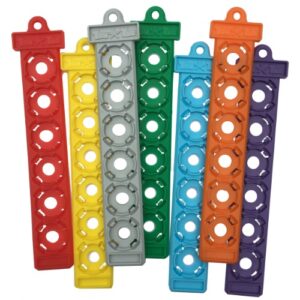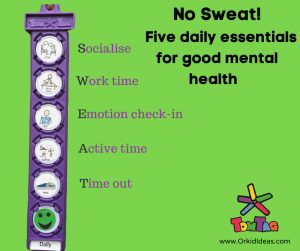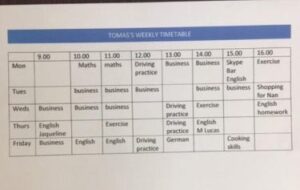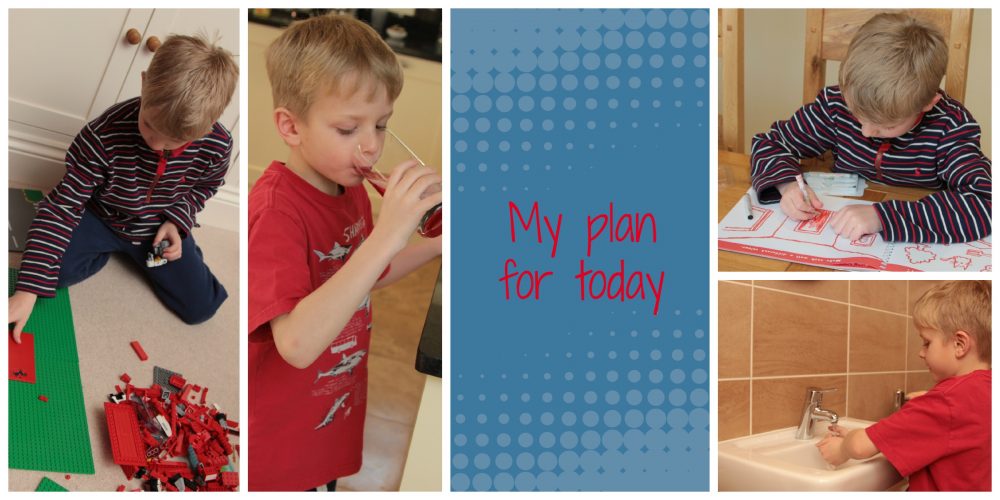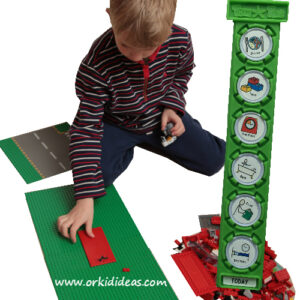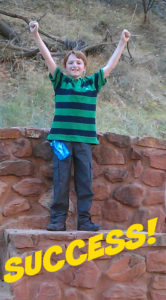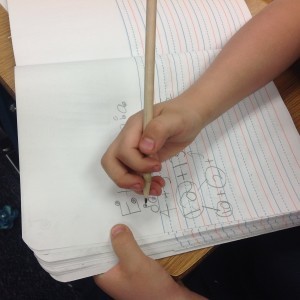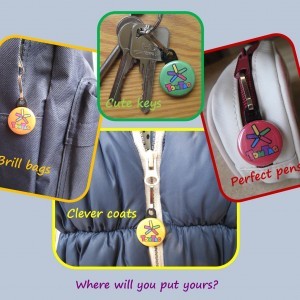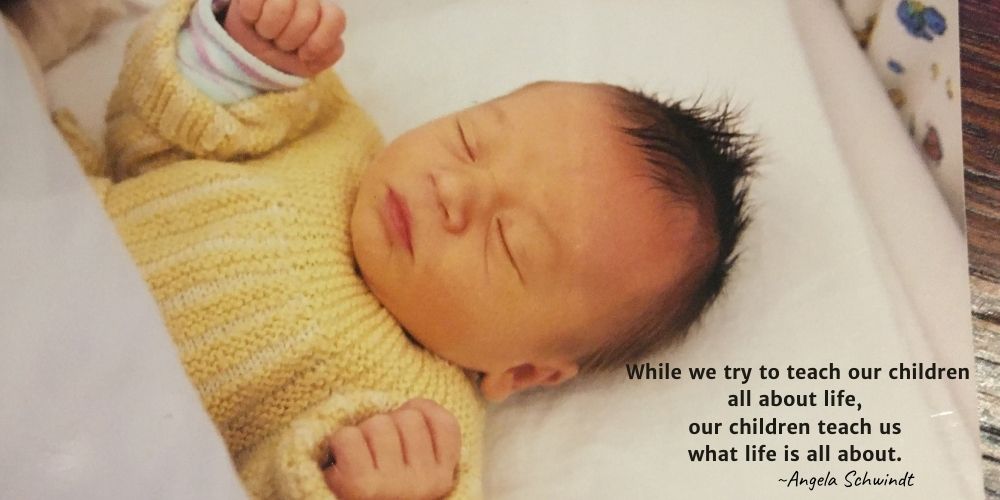
‘While we try to teach our children all about life, our children teach us what life is all about‘ ~ Angela Schwindt
My son, Tom, the inspiration for TomTag visual supports, turned 21 years recently. It seems like only yesterday that he was a new born baby snuggled in my arms. Like any new mum it felt like the beginning of new things. A rainbow of hopes, dreams and possibilities spreading out before us.
Autism cast a shadow on that rainbow.
But the rainbow was always there. It just needed to be looked at from a new perspective. With the understanding that hopes, dreams and possibilities mean different things to different people.
Over the last 21 years Tom has taught me so much. Not just about lorries, swiss trains and football 😉 But, about the important qualities in life – patience, resilience, humility and determination. That each of us has a right to be here, to be heard and to live life to its fullest potential.
To celebrate Tom turning 21, I’m sharing 21 lessons I’ve learnt from living with autism. I know what a rollercoaster it can be parenting an autistic child so I hope our experiences bring some positivity and hope to those of you who may be going through similar experiences. Please know that however hard it is now, with time, things do change, the shadows lift and the rainbow reveals itself🌈
Clare ❤
Lesson 1: Let Go Of Expectations
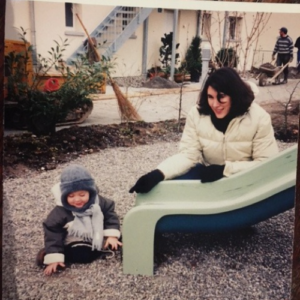
As a new mum, ‘What to Expect the First Year ‘ by Heidi Murkoff was my bible for the first 12 months of Tom’s life.
Like every new mum, every month I proudly ticked off Tom’s achievements– sitting, crawling, first solid food. Then I almost burst with pride. Aged 10 months, he pulled himself up on the sofa and walked across the room!
But when I took him to the playground, I noticed that Tom ignored the other children. He wasn’t interested in playing on the slides and swings. Instead, he spent his ‘playtime’ picking up handfuls of the gravel and watching it fall between his fingers.
I was a bit confused by Tom’s reaction and obsession with the gravel. I felt sad for him that he was missing out. Over time I found the joy at seeing him engrossed in HIS form of play. It was an early lesson in letting go of MY expectations. Now I understand that playtime was always going to be a sensory experience for Tom. He always wanted to touch things and liked to know how things tasted or smelt. Even railings, but that’s another story!
I didn’t know it then but letting go of expectations was to become my mantra.
Lesson 2: Live In The Moment
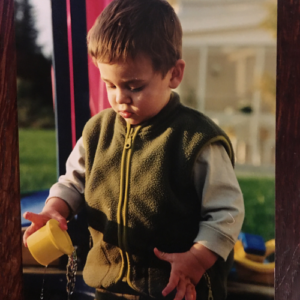
From an early age Tom was fascinated with water. As a toddler he loved to pour water into and out of small cups or jugs for hours on end.
The joy of watching him completely absorbed in his water play, his curiosity for the waters feel, look and movement taught me to live in the moment.
I realise now it was a sensory need for him. The visual stimulation from the patterns made when the water dripped and poured into various containers made him feel happy and calm.
Lesson 3: The World Is Loud And Bright
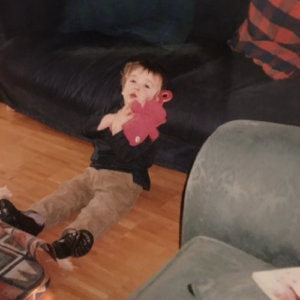
When Tom was a toddler, I often thought he had superhuman powers of hearing and seeing. He could hear a dog bark from miles away, get agitated during loud conversations and react immediately to bright lights.
Yet…he didn’t seem to hear me calling his name. These powers, far from helping him, seemed to cause him acute distress. He covered his ears and eyes with his hands, hid under tables and tried to run away. Anything to get from the noise and brightness. If he couldn’t get away, he would have a meltdown.
I was confused and worried by his reactions. I instinctively knew what would help him. He needed his favourite Tellytubby, a cuddle and a quiet place to make him feel safe.
Since having Tom I’ve realised how loud, bright and intense the world can be. I know now that he sees, feels and hears things that I’d never paid much attention to much more intensely. This sensory overload was the reason for his meltdowns. Heck, maybe that’s why he walked at such an early age …so he could escape!
I’m now more aware of the sights and sounds around us. I’ve even noticed that the intensity of fluorescent lights in offices and shops often affects me . During these moments of sensory overload I need to find a quiet place and take time to collect myself.
Lesson 4: Silence Can Speak Volumes
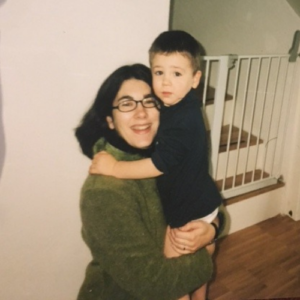
When I came home from hospital after giving birth to Toms sister I expected a grand home coming. I was looking forward to an excited toddler giggling and rushing towards me arms outstretched, impatient for a cuddle.
Instead I was greeted with a silent hug . A seemingly underwhelming welcome. I knew, however, from the way Tom hugged me, so tightly. The way he looked at me that he had missed me, that he loved me.
This was the start of my understanding that we didn’t need words to communicate. It was a good thing as he didn’t start to talk until he was nearly 5.
We’ve had a humongous amount of hugs since then!
Lesson 5: Never Take A Milestone For Granted
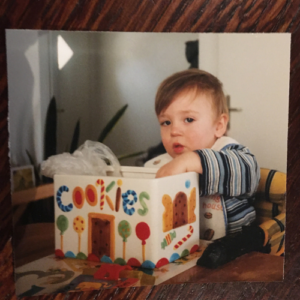
Tom was nonverbal until almost 5 years old.
When I was told by doctors that it was highly likely Tom may never speak. I was devastated. I could feel his frustration at not being able to tell us what he wanted. We had to find some way he could communicate with us.
Tom used to take me by the arm and pull me towards what ever he wanted. For example, the fridge if he wanted a drink or the front door if he wanted to go outside. We had to find a better way.
We started using objects and picture cards. These gave him a way of showing us what he needed or wanted. He’d give me the drink card if he wanted a drink or show me the coat card if he wanted to go outside. Guess which card was always top of the pile!? The biscuit card!
It’s not the milestone we were expecting but we didn’t take his progress for granted.
Lesson 6: Celebrate Every Unique Moment
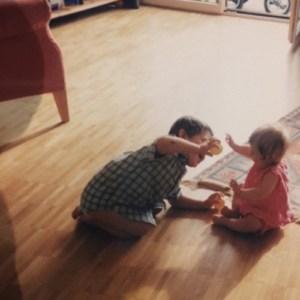
The arrival of Tom’s sister Hannah marked the start of Tom’s shut down period.
Most of us sadly, are all too familiar with a lockdown but Tom was ahead of the curve! Back in 2002, he went into his own self-imposed lockdown. Showing zero curiosity about his new baby sister, Hannah, other children, or visitors. He screamed when she cried. There was only one thing he wanted to do all day, every day. Lie on the floor and move a piece of a toy wooden train track up and down in front of his face.
It was heart-breaking to watch. I felt intensely sad. Tom was missing out on all the fun toddler things I had planned to do with him. I was also fearful. Worried that Tom would forever resent his little sister.
One afternoon, without warning, Tom abandoned his beloved train track (seen in the photo at the edge of the rug). He spontaneously started to play with Hannah. Tears of joy streamed down my face. I knew that this was a unique moment to be celebrated.
From this small precious moment, the most incredible bond between the two of them has grown and developed over the years.
Lesson 7: Life Goes On
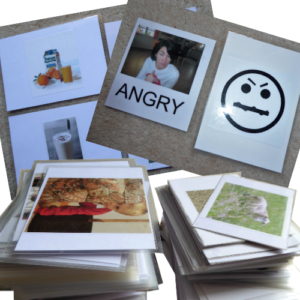
Receiving Tom’s diagnosis of autism just before he turned 4 came as a mixture of relief and sadness.
Relief as for almost 2 years I’d had a nagging feeling that something wasn’t quite right. Tom’s lack of speech, repetitive play and extreme reactions to any changes in his routine now made sense . However, I felt an equal measure of sadness. The future I imagined had been taken away. I felt isolated, overwhelmed, and missed having my family and friends on the doorstep.
But life goes on. I quickly became the CEO of Tom, Plc!
Soon after the diagnosis, we were offered a place on a home-based therapy programme – 40 hours a week of applied behavioural analysis therapy (ABA). A 2-year programme (the first of its kind in Switzerland) which took over my life. My weeks became a flurry of appointments, assessments, and the day-to-day management of the therapy sessions. Not to mention all the resources, the hundreds of picture cards I made to support the programme.
I hit the ground running! Working as a therapist on the ABA team gave me a sense of purpose. It also allowed me to adapt Tom’s programme so it reflected the things that mattered to him. More TBA than ABA!
Lesson 8: The Power Of A Hug
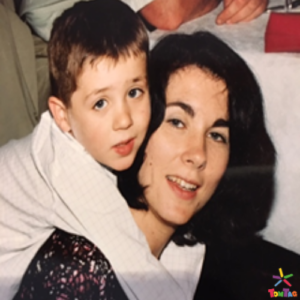
Three months into Tom’s ABA programme we flew to the UK to attend my mums 60th birthday party. A gathering of over 70 family and friends in a local pub.
It would have been easy to opt out of going. My mum knew how challenging it was for Tom to be out of routine. She would have understood if we had chosen to stay at home. But seeing family was important . My mum had survived breast cancer, so I really wanted to mark this landmark birthday with her.
The journey didn’t worry me as much as the party. We had made frequent visits to the UK since Tom was a baby. We often joked he had been on a plane more times than a train or bus. My travelling preparation was therefore honed to a tee particularly my ‘survival bag’. A handy assortment of books, toys and treats which went on all our travels. It could be deployed to help distract and calm Tom in situations he found stressful or overwhelming.
But, it was often a simple hug, which had the real power to calm, reassure and comfort him.
Lesson 9: The Importance of Perseverance

Tom made huge progress on his ABA programme. He started to speak and repeat phrases.
We were so excited to hear his voice. When he randomly said ‘Nanny’s greenhouse’ we flew back to the UK as soon as we could. Delighted that he could see Nanny and her greenhouse!
I’d have to wait a bit longer to hear him say ‘I love you mummy’. Tom had significant speech and language difficulties. He was unable to express his ideas and thoughts in complete sentences and had trouble pronouncing certain sounds. I admit I found the way he said ‘wamp’ for lamp charming. However, other people found it difficult to understand him.
He started regular speech and language therapy which included work on his ‘l’ sounds both in the therapy session and lots of practice at home.
With hard work and perseverance, he finally mastered that tricky ‘l’ sound.
Lesson 10: The World Is a Beautiful Place
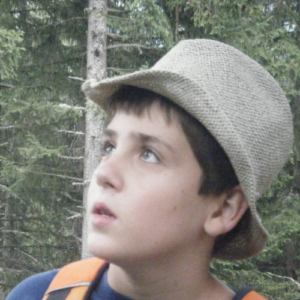
Tom loves patterns. He is fascinated by lines, shapes and colours 〰🔴🔻🌈
When he was younger, he would often stop and stare at the shadows cast by railings. Fascinated by the shapes made by the lines. He’d be mesmerised looking at a crack in the pavement. Captivated by the glow of the setting sun and transfixed by a falling leaf, as shown in this photograph.
Tom taught me to take notice of all the little things that make our world so beautiful 🌍
Lesson 11: The Power of Sharing
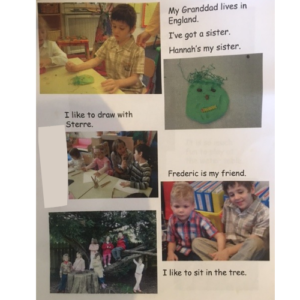
Like every mum dropping their child off for their first day of school, I felt the usual mix of emotions . Proud yet worried about how Tom would settle in. Twelve months earlier it seemed inconceivable that we would find anywhere suitable for Tom. It had been quite a journey to get him to this point. Leaving him in the classroom was so emotional and overwhelming. I had to dash to the car for a cry.
I knew that it would not be possible for Tom to attend school fulltime. His communication difficulties, limited attention span and sensory issues. made full time attendance too challenging. I didn’t want to set him up for failure. For him to feel defeated by education at the very offset.
I wanted Tom to have the opportunity to learn alongside his peers. To have the shared cultural experience of education. I wanted a flexible option – sharing his education between home and school.
We discounted local primary and special schools because they were German speaking. Tom was just learning to communicate in English, so this was a no-no. The international school was our only option. Would they be prepared to share Tom’s education and allow him to have a mix of school and home-based learning?
We were lucky. They did.
Aged 4, and a year older than his peers, Tom started at the Zurich International Preschool for 2 morning per week with an assistant. His ‘at home’ time was spent following his ABA program and with me. It gave him time to sort out some of things he found confusing at school and space to recharge.
This collage of pictures taken during Tom’s Preschool year shows just how happy he was at school. Tom was able to enjoy a shared education for the next six years . We are forever grateful to the staff at ZIS for their patience, respect and commitment to Tom’s flexi-schooling.
Lesson 12: Making Sense of Senses
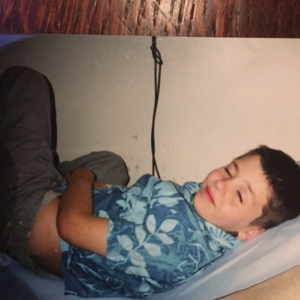
En route to Cornwall for a summer holiday, Tom broke his arm. He fell off a climbing frame at a service station.
We didn’t realise he’d broken his arm – he didn’t scream, shout or make any fuss. He simply picked himself up and headed back to the car. It was only when we were back on the road that I noticed him clutching his elbow. His face drawn, ashen and etched with pain. We veered of the motorway to find the nearest A& E. This photograph was taken as we waited to be seen at the hospital.
The X-rays showed that it was nasty break. I felt terrible. He must have been in the most horrendous pain and we had been unaware of his suffering.
It was just so confusing. Haircuts, having his toenails cut, washing his face caused him to scream to high heavens. Breaking his arm – not even a whimper.
We already knew that Tom had difficulties with his language and communication. This this couldn’t explain the lack of any emotion to his injury. Even without words, tears would have at least alerted us to his pain. I realised then that there must be major issues with how he was interpreting sensory information. This was having an impact on how he was behaving and responding. It just seemed so unfair for one little boy to have to deal with yet another set of difficulties. I felt defeated…
It was time for an occupational therapist to join team Tom!
Amongst other sensory issues, OT assessments showed that Tom was both overly and under sensitive to touch. His behaviour and certain reactions started to make sense.Tom had always disliked messy play but would be unaware of his hands and face being dirty. He loved being hugged by me but would recoil in horror if anyone else tried to touch him. He touched and mouthed objects but was fussy with his food and avoided certain textures.
So, aged 5, Tom started weekly sessions of OT at school and a programme of activities and exercises at home. With patience, commitment, and hard work, Tom has steadily improved his ability to interpret sensory information from his body and the environment. Haircuts and nail cutting are no longer an issue though he still has a relatively high pain threshold and tolerance for being cold.
This experience with Tom also taught me the importance of providing a nonverbal way to communicate aches, pain (including broken limbs!) and sensory overload to others in a simple and effective way. That’s why we’re proud to include a ‘I can do it manage me feelings ‘ kit in the TomTag range.
Lesson 13: Less Is More
As part of his occupational therapy programme Tom had a series of daily activities to practice at home. There were movement exercises to encourage the right and left side of his brain to talk better to each other. This interhemispheric integration would improve how he could react to his surroundings. There were also lots of fine motor activities. Tasks to help improve the small muscles in his hands and wrists to help him with skills like, grasping, dressing ( zips & shoelaces) writing and drawing.
I was willing to work and put in the time with Tom but sometimes he wasn’t interested in the activities. On days like these it was easy to feel disheartened and resentful.
Short of bribing him with his favourite biscuits (!) I learnt that the secret to getting him to do his OT exercises regularly was to do a little often. It also helped to spread them out during the day and turn them into a game. It was also important not to take things personally. If Tom was stressed or agitated during the activities then we would leave it and start again the next day.
Lesson 14: Joyful Collaboration
Tom’s ABA programme was a success. Now he could communicate what he wanted, concentrate much better and was behaving appropriately at school. But life isn’t just about getting your needs met and fitting in. It’s about connection and friendship. The joyful experience of sharing our ideas and feelings with another person.
How could we help Tom develop meaningful conversation, cooperation, flexible thinking and empathy. All the skills he needed to make and keep a friend?
I discovered Relationship Development Intervention (RDI) by chance in a magazine article. This programme based on Developmental Psychology was the perfect fit. It’s guiding principle is Joyful Collaboration. The idea that joy comes not from a toy or game but from sharing an experience.
Tom moved from ABA onto RDI at the same time as receiving OT and SLT (got to love an acronym or two!). It was a full-time job coordinating all these programmes and collaborating (joyfully!) with various professionals.
For RDI, we practised different activities at home working on joint attention, collaboration, teamwork, and communication.
In this short video clip, Tom (aged 8) and I are sharing the job of watering flowers. We take turns with the watering can with the aim of helping Tom practise being a ‘team member’. Although he was reluctant to water the flowers, he accepted my instructions . I loved how the ‘job’ developed into a fun chasing game. A true Joyful Collaboration!
Lesson 15: Planning Is Key
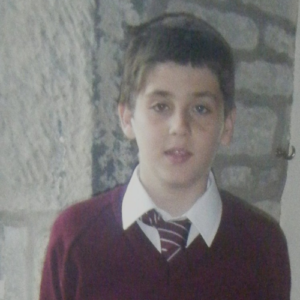
When Tom was 10 years old, we relocated back to the UK from Switzerland.
For any family moving home can be stressful, moving to a new country -double the stress! I was worried about how Tom would manage this major change in his life.
It was potentially a huge challenge for him. He craved familiarity, had built up excellent relationships with his various therapists and was thriving under his bespoke educational arrangement. How would he cope with a new home, attending school for a full day, wearing a school uniform for the first time?
Tom coped.
The relocation went relatively smoothly because we planned and prepared for it. Creating a picture book of the new house and school was a great help .We focused on the positive aspects of the move such as being able to see more of his grandparents and cousins . We encouraged him to share any worries he had about the move. He worked on a story about his mixed feelings about leaving Switzerland with an amazing counsellor at the international school.
Critically, we took his routines with us -his morning, bedtime, get-ready for school routines.
He settled in remarkably well at the local mainstream village primary school. There was some regression in his language and behaviour. But, with the support of a sensitive and dedicated teacher and assistant Tom soon found his feet and voice.
I quickly formed a new Team Tom with a new speech and language therapist and occupational therapist.
Planning was therefore the key to making the relocation a success.
Lesson 16: The Importance of Special Interests
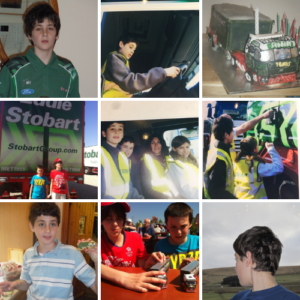
It was one of my biggest worries when we relocated back to the UK from Switzerland. How would Tom manage without his special interest. -Swiss transport. He loved swiss trains . His favourite part of any journey was spotting lorries from the Swiss firm Galliker.
Fortunately, I had a secret weapon. Eddie Stobart – the iconic green delivery lorries that criss- cross the UK 24 hours a day.
I cunningly introduced Tom to Eddies and signed us up to the Eddie Stobart Spotters Club. We live near to the M62 – prime Eddie Stobart spotting territory! We could go out to eat as a local pub overlooked the motorway. The staff got to know us . They always gave us a window seat where Tom would quietly sit, happily keeping a tally of all the lorries he spotted on the nearby motorway (using his Eddie Stobart writing pad and pencil!)
Eddie Stobart lorries were a source of comfort and enjoyment for Tom. For us, they became a source of inspiration. Birthday cakes, biscuits, and presents also assumed Eddie status.
More importantly, Eddie Stobart became a means of encouraging him to engage in his learning. Art projects, tricky writing tasks and maths problem could all be given the Eddie treatment! Tom approached any task that had a hint of Eddie, with enthusiasm, happiness and a willingness to learn.
Tom’s love of Eddies lasted 3 years. The most memorable event was a tour of an Eddie Stobart depot and a chance to sit behind the wheel. I don’t know who was more excited – Tom or I!
Lesson 17: Fussy Eating Habits Can Change Over Time

When Tom was younger, he was a picky eater.
I knew that Tom needed a balanced diet – a variety of fresh, healthy food for good health and development. For the first few years, I felt guilty and responsible that he would only eat a limited amount of food.
Tom’s diagnosis of autism and the results of his OT assessment helped me understand his fussy eating habits.
He needed familiarity and routine. Trying new experiences including eating new foods were therefore difficult. It was obvious now why he was preoccupied with certain foods. They provided him with reassuring predictability.
Tom craved soft food like ice cream. He liked the feeling of coldness in his mouth. Bland foods like pasta, bread and chips were his preferred choice. He disliked meat because he found chewing difficult. Though he did make an exception for chicken nuggets! He disliked tomatoes but liked ketchup or tomato sauce because he didn’t like the texture of tomatoes . His favourite meal was pizza but without any topping other than tomato sauce.
Sharing regular meals and snacks and introducing new foods gradually helped Tom get comfortable with new foods. However, the biggest change came when he was 15. He started a Jamie Oliver cooking course at school. By preparing and cooking food with the encouragement from two talented teachers, Tom’s food preferences changed. He was more willing to try different foods.
This Christmas aged 20, Tom enthusiastically dipped carrot sticks and chunks of olive bread into his baked camembert. His food choices have come a long way since this photograph was taken!
Lesson 18: Detective Work

When Tom was younger it was difficult for me to know what his feelings meant. It was also difficult for him to pick up clues about how I was feeling.
Although Tom feels the same thing as everyone else, the nuances can be blurred. His feelings are much more intense and can be harder to distinguish. Feeling sadness could lead to him crying but also to laugh or shout for no good reason. He has difficulty interpreting gestures and expressions – often thinking I’m angry when I’m not!
With his SLT, we created a book of feelings to help Tom understand his own and other people’s feelings. We used this book to teach him the words he needed to express and recognise different feelings.
This work made me look at my own feelings and emotions. I had to understand what feelings mean to me before explaining them to Tom. We were both developing our feelings detective skills!
Helping him to identify the size of his feelings and relate this to his physical reaction was also important. Often, a little feeling could grow into a gigantic feeling. Tom could spend hours, days, even weeks catastrophising. Churning over thoughts and feelings in his mind like a sticky record.
Teaching and modelling simple self-help strategies like self-talk (phrases Tom could say to himself when he was feeling worried) helped. At secondary school he used a sensory levels chart (a visual chart to recognise his sensory stressors) to help him to manage his feelings.
Our experience led to the development of the TomTag Feelings Notebook. A resource for other families to use to support their feelings and emotions detective work.
That’s a thumbs up from Tom!
Lesson 19: Look At Ability Not Disability

Like any parent I was anxious about Tom’s move to secondary school. I had managed to keep him a year behind cohort, so he started at age 12 . However he was both academically and socially behind his peers and it felt like the gap between them was widening. Like a train picking up speed out of the station and you can’t get on it no matter how fast you run.
It was unrealistic to expect any exam success – unless there was an exam in Swiss train timetables and routes! Tom gets anxious even at the mention of the word test. Furthermore, his language difficulties meant that he struggled to understand complex sentences, instructions and specific vocabulary.
Despite the anxieties and challenges he faced, Tom always worked hard and tried his best . He was the only young person at his school to consistently achieve straight A grades for attitude across all subjects. This exemplary attitude to learning was motivated by his need to please his teachers and not disappoint or upset anyone. Though, he did enjoy many of his lessons. I felt so proud when he was regularly awarded prizes for effort at school prize giving.
Tom left school with few formal qualifications, but he left smiling, confident and with the motivation to continue learning. He even enjoyed Prom!
Lesson 20: Say What You Mean

One of the biggest challenges for Tom due to his language difficulties is making sense of what people are saying.
When Tom’s grandad suggesting taking him for a spin in the car Tom looked horrified!
Before I had Tom, I didn’t think about the extent to which we play games and hide behind words. How often we use sayings like ‘Pull your socks up’, ‘we’ve run out of milk ‘,’Get a move on’ . Many of which are confusing for Tom because he takes what is said literally.
When he was younger, I learnt to tell him exactly what I wanted him to do using as fewer words as possible. I helped him to learn how to look out for expressions on faces and realise the importance of how expressions are more important than the words themselves by emphasising my facial expressions and using exaggerated gestures . Some days I felt like a CBeebies presenter in full flow!
Tom can still become confused by words with similar or related meaning. Encouraging him to say when he hasn’t understood something and talking about some of the saying we use regularly and what they actually mean helps. His love of football is helping him experience playful teasing in a light heated way. Some good old footy banter with people he trusts. Thankfully his team are doing well so he can banter from a position of strength!
Lesson 21: It takes a village.
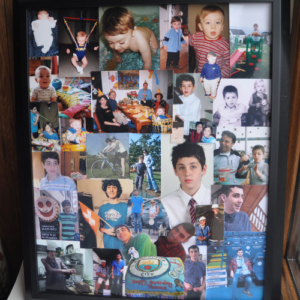
After 21 years living with autism, I have learnt that it really does take a village to raise a child.
My village is larger than most. My family, friends, the dedicated therapists, teachers, teaching assistants and personal trainer we’ve been privileged to work with over the years . Plus, the many people we’ve met who have shown us the character of their humanity. The hairdressers, barbers, dentists, shops assistants, waiters who when faced with difference have responded with patience, empathy and decency.
Every victory we experience with Tom whether it’s trying a new food, meeting new people or dealing with a change of plan belongs to us all.
Tom has taught me that it’s okay to ask for help. He’s taught me that just like any other child he needed me and our village to believe in him. His potential to learn, grow and thrive alongside his peers and community.
Thank you, Tom, for these lessons in what really matters. I know you will continue to face the next 21 years with courage, determination and the enduring support of your village.
I’d love to know in the comments below what lessons you have learnt from your children.
Clare ❤
Resources
-
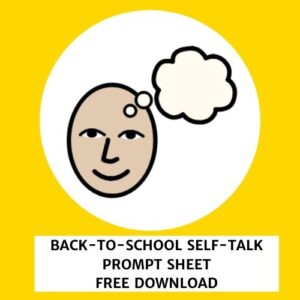
Back-to-School Self-Talk Prompt Sheet
-
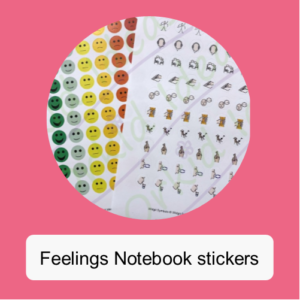
Extra sticker sheets for Feelings Notebook
-

Feelings & Emotions Sticker Pack
-
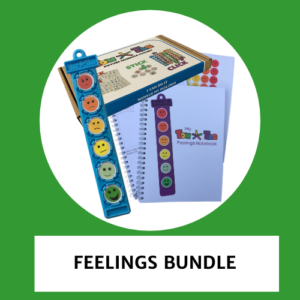
Feelings Bundle
-

Feelings Tag-O-Meter
-
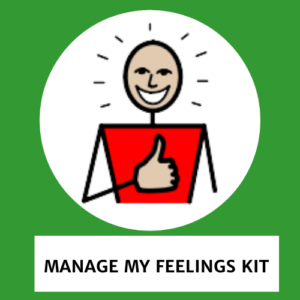
I Can Do It Manage My Feelings Kit
-
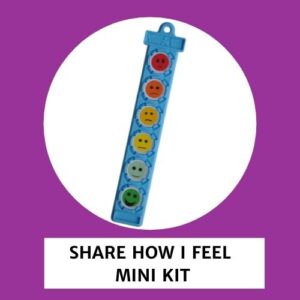
I Can Do It Share How I Feel Mini Kit
-

I Know What To Expect – My Vaccination Mini Kit
-

Phoebe’s Green Christmas Kit in collaboration with Embracing Arts & Christmas For Kids
-

Phoebe’s Green Christmas Sticker Pack in collaboration with Embracing Arts & Christmas For Kids

